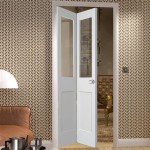Interior Design Programs in Las Vegas: A Comprehensive Guide
Las Vegas, often associated with entertainment and hospitality, also presents a growing demand for skilled interior designers. The city's vibrant tourism industry, coupled with a steady residential market, fuels the need for professionals capable of creating aesthetically pleasing and functional spaces. This demand has led to the establishment of several interior design programs within the Las Vegas area, each offering unique curricula and specializations to cater to diverse career goals.
Prospective interior designers in Las Vegas must carefully evaluate their options, considering factors such as program accreditation, curriculum focus, faculty expertise, and career placement services. This article aims to provide a comprehensive overview of the interior design programs available in Las Vegas, highlighting their key features and helping individuals make informed decisions about their education and career paths.
Accreditation and Program Standards
Accreditation is a crucial factor to consider when choosing an interior design program. A program accredited by the Council for Interior Design Accreditation (CIDA) signifies that it meets specific standards of quality and rigor. CIDA accreditation indicates that the curriculum is comprehensive, the faculty is qualified, and the program prepares graduates for entry-level practice. Employers often prefer to hire graduates from CIDA-accredited programs, as it demonstrates a commitment to professional standards. Furthermore, graduation from a CIDA-accredited program may be a prerequisite for taking the National Council for Interior Design Qualification (NCIDQ) exam, a standardized test that assesses competency and is often required for professional licensure or certification.
Beyond CIDA accreditation, prospective students should also investigate the overall reputation and standing of the institution offering the program. Factors to consider include the school's history, its commitment to student support, and its connections to the local design community. Visiting the campus, speaking with current students and faculty, and reviewing program outcomes data can provide valuable insights into the quality of the program and its alignment with individual career aspirations.
It is important to note that not all design-related programs are equivalent. Programs focused on interior decorating, for example, may emphasize aesthetics and surface treatments but lack the technical and practical training necessary for professional interior design practice. A true interior design program will cover topics such as space planning, building codes, accessibility regulations, construction documentation, and sustainable design principles.
Curriculum and Specialization Options
The curriculum of an interior design program should provide a balance of theoretical knowledge and practical skills. Core courses typically cover the history of interior design, design principles and elements, color theory, materials and finishes, drafting and CAD software, and lighting design. Advanced courses may explore specialized areas such as healthcare design, hospitality design, retail design, or sustainable design. The program should also incorporate studio courses, where students can apply their knowledge to real-world design projects and develop their creative problem-solving abilities.
Many interior design programs offer opportunities for students to specialize in a particular area of interest. This specialization may be offered through elective courses, studio projects, or internships. For example, a student interested in sustainable design might choose to focus on energy-efficient building materials, water conservation strategies, and indoor air quality. A student interested in hospitality design might focus on creating functional and aesthetically pleasing environments for hotels, restaurants, and casinos. These specialization options can enhance a student's marketability and prepare them for specific career paths within the interior design field.
Technology plays an increasingly important role in interior design. Programs should provide students with training in relevant software applications, such as AutoCAD, Revit, SketchUp, and Adobe Creative Suite. These tools are essential for creating construction documents, 3D visualizations, and presentations. Familiarity with Building Information Modeling (BIM) is also becoming increasingly valuable, as it allows designers to collaborate effectively with architects, engineers, and contractors. Hands-on experience with these technologies is crucial for graduates to be competitive in the job market.
Faculty Expertise and Industry Connections
The quality of the faculty is a key indicator of the overall quality of an interior design program. Faculty members should possess a combination of academic qualifications and professional experience. Ideally, they should be licensed interior designers or architects with a proven track record of success in the industry. Faculty expertise should span a range of design disciplines, including residential, commercial, hospitality, and healthcare design.
A program's connections to the local design community can provide valuable opportunities for students to network with professionals, gain practical experience, and find employment after graduation. Programs that actively engage with local firms, offer internships, and host guest lectures by industry experts can significantly enhance their students' career prospects. Students should also be encouraged to participate in professional organizations, such as the American Society of Interior Designers (ASID) and the International Interior Design Association (IIDA), to further expand their networks and stay abreast of industry trends.
The faculty should also provide mentorship and guidance to students, helping them to develop their portfolios, prepare for job interviews, and navigate the complexities of the design profession. A strong faculty-student relationship can be invaluable in fostering students' creative and professional growth. Therefore, prospective students should inquire about the faculty's accessibility, teaching style, and commitment to student success.
Portfolio Development and Career Services
A strong portfolio is essential for securing employment in the interior design field. Interior design programs should provide students with ample opportunities to develop their portfolios through studio projects, internships, and independent design work. The portfolio should showcase a range of design skills, including space planning, concept development, technical drawing, and 3D visualization. It should also demonstrate the student's ability to solve design problems creatively and effectively.
Career services are another important consideration when choosing an interior design program. The program should offer assistance with resume writing, portfolio development, job searching, and interview preparation. It should also maintain relationships with local design firms and provide students with access to job postings and internship opportunities. Some programs may even offer career counseling and placement assistance to help graduates find employment after graduation.
The program's success in placing graduates in relevant positions is a key indicator of its overall effectiveness. Prospective students should inquire about the program's placement rate and the types of jobs that graduates have secured. They should also ask about the program's alumni network and the support it provides to graduates in their career development. A strong alumni network can provide valuable connections and mentorship opportunities for recent graduates.
Cost and Financial Aid Options
The cost of an interior design program can vary significantly depending on the type of institution, the length of the program, and the availability of financial aid. Tuition, fees, books, and supplies can add up to a substantial investment. Prospective students should carefully research the costs associated with each program and explore available financial aid options.
Financial aid may be available in the form of scholarships, grants, loans, and work-study programs. Scholarships and grants are typically awarded based on academic merit, financial need, or other criteria. Loans must be repaid with interest, but they can help to cover the cost of tuition and living expenses. Work-study programs allow students to earn money while attending school by working part-time on campus or at off-campus organizations.
Prospective students should also investigate whether the program offers any scholarships specifically for interior design students. Many professional organizations and industry associations offer scholarships to students pursuing degrees in interior design. Applying for these scholarships can help to reduce the overall cost of education and demonstrate a commitment to the field.
Specific Interior Design Programs in the Las Vegas Area
Several institutions in the Las Vegas area offer interior design programs. These institutions vary in their size, focus, and accreditation status. Some of the notable options include community colleges offering associate degrees and universities offering bachelor's degrees in interior design. Researching the specific curriculum, accreditation, and faculty of each institution helps prospective students find the best fit for their individual needs and career aspirations. Contacting the admissions department of each institution to request detailed information about the program and its requirements is recommended. Scheduling a campus visit and speaking with current students and faculty can provide valuable insights into the program's culture and learning environment. Comparing the advantages and disadvantages of each program will allow students to make an informed decision about their educational investment.

Top 10 Best Interior Design School In Las Vegas Nv Updated 2024 Yelp

Architecture University Of Nevada Las Vegas

Corporate Projects Whl Design Group Interior Las Vegas

Top 10 Best Art Schools In Las Vegas Nv Updated As Of 2024 Yelp

Window Treatment Program For Designers

Lvdc Introduces Student Career Day

Top 20 Best Interior Design Schools In The World 2024

A Las Vegas Retreat Combines Luxury With Love Of The Land

Heading To Las Vegas Market Clear Your Calendar For Multiple Program Offerings Furniture Today

Accredited Programs Cida
Related Posts








